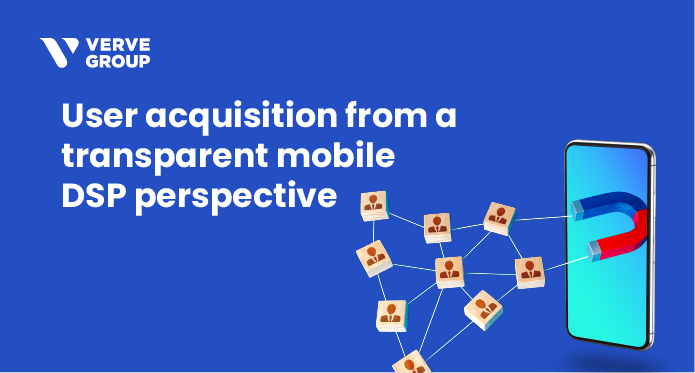The keys to successful mobile user acquisition (UA) are changing. App advertisers are preparing to embrace Apple’s privacy measures, which are about to be enforced in 2024. They are also beginning to eye Google’s privacy changes and trying to figure how iOS and Android UA measurement will be different.
App developers seeking new users face an urgent need to understand and embrace transparency, privacy, and contextual targeting. The shift from behavioral to contextual targeting, the implications of SKAdNetwork (SKAN), and the balance between machine learning and human intervention are key factors shaping the industry. In this blog post, we’ll explore these factors and share strategies and best practices for navigating this new terrain in 2024.
Privacy-first priorities in advertising
The privacy-first advertising landscape demands a paradigm shift from advertisers. With users’ data privacy taking center stage, strategies need to pivot from traditional behavioral targeting to transparent, consent-based approaches. This not only preserves user privacy but also builds trust, a crucial factor in driving engagement and conversions.
That said, finding the right users and bidding efficiently in this pro-privacy world is rapidly evolving. App marketers, DSPs, and all industry players can no longer rely on user data for targeting. However, they can still achieve marketing objectives via contextual targeting and by using other important variables, such as phone model, location, operating system, and more.
App marketers, DSPs, and all industry players can no longer rely on user data for targeting.
However, they can still achieve marketing objectives via contextual targeting and by using other important variables.
Transitioning to contextual targeting: best practices
As behavioral-based targeting becomes obsolete, contextual targeting is taking center stage. Whether you’re just getting started with contextual or you’re looking to optimize active campaigns, below are some of our top recommendations.
- Successful contextual targeting matches ads to publishers with affinity to the advertiser’s products. This helps ensure that ads appear on relevant content.
- Competitor research of similar apps is crucial when preparing for a contextual campaign. The research should include studying what competitors are doing in terms of targeting and creative, as well as their various strategies.
- Build close partnerships for the best creative and campaign results. Let’s say your design team came up with brilliant creative for your latest mobile UA campaign. What if the publisher’s ad formats aren’t well-suited to your assets? Your vision of an ideal creative might fall apart, with disappointing campaign results. Creative is a piece of code that must be impeccable when it’s automatically uploaded after a new bid. Close collaboration with the partners is essential for ensuring flawless execution.
SKAN’s ripple effect on mobile UA strategy in 2024
SKAdNetwork (SKAN) thoroughly protects users’ privacy, but it has definitely complicated user acquisition (UA). By introducing privacy thresholds, SKAN breaks the link between an impression and an install.
Facilitating SKAN execution is a priority for us at Dataseat, and we’re here to help make implementing it more accessible. Despite the challenges of switching over to SKAN 4.0, it is a critical tool for successful UA campaigns. We’re expecting SKAN 5.0 sometime in 2024. More importantly, the industry is expecting a fingerprinting ban on iOS which will leave advertisers with SKAN as the only option. This means it’s important to get onboard sooner rather than later – and there is a very practical reason: the longer your campaign history and learnings, the higher chances of improved UA KPIs.
We also predict that app developers will reduce how many DSPs and ad networks they work with. Spreading your campaigns everywhere may result in less access to the privacy threshold, but using one DSP will provide that DSP more visibility into the data. This will put more pressure on advertisers to choose partners based on transparency and their ability to work with the SKAN thresholds.
Machine learning needs a human touch
Artificial intelligence (AI) and machine learning (ML) are hot topics in every industry these days. In ad tech, machine learning is critical to optimization — but campaigns still require the support of human-supplied data and human decisions. A hybrid approach of AI/ML and hands-on, real people is crucial for effective, efficient optimization.
At Dataseat, we offer a combination of our proprietary AI/ML algorithms (with models built for advertisers’ unique use cases) and seasoned mobile UA experts who can set the right direction and provide insights into how to optimize campaigns. This hybrid approach is essential for success in the current market conditions. We believe that when it comes to optimization, you need both a machine and a human touch.
Need more insights on contextual mobile user acquisition?
Check out my full conversation with our friends at Apptica: you can listen to it as a podcast on Spotify, Apple Podcasts, or Google Podcasts.
If you need to talk with Dataseat experts about privacy, contextual targeting, and SKAN, we’re always eager to talk and offer our advice. Get in touch with Dataseat.
Alessandro Giuliani is an expert in mobile ad tech with over 10 years of industry experience. His career in ad tech started at Criteo, where he developed the mobile app business in EMEA. Alessandro then joined Liftoff, where he was responsible for the growth of all existing accounts. During this time Alessandro’s entrepreneurial mindset kicked in, inspiring him to team up with his previous colleagues from Criteo to join Dataseat’s leadership team. Dataseat is the transparent contextual mobile DSP and the longest-standing expert in SKAN and all things privacy. Alessandro as VP of operations is responsible for all of Dataseat’s global business which has experienced exceptional growth over the last three years.







